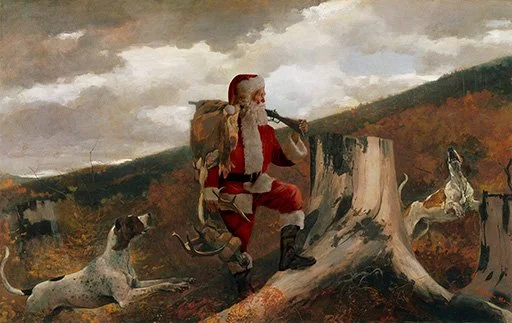Inspired by: Winslow Homer - A Huntsman and Dog
Homer and his brother were avid hunters and anglers. They spent forty years in pursuit of their avocation. In 1886 they joined the Northwoods Club. An Adirondack hunting and fishing preserve for the well to do from NY and Boston. It was there that he created his sports paintings using members and their guides as his subjects.
When we think of Homer’s Adirondacks we see lush streams and forests, but that began to change. In the 1880’s a movement arose to save the Adirondacks from the spread of lumbering, railroads and factories. In many respects this painting is his protest banner.
The mountainside has been denuded, and the huntsman steps over the base of a tree felled by loggers. It was painted one year before the Forrest Preserve legislation provided for the establishment of the Adirondack Park. Two years later at the New York Constitutional Convention, they drew up a covenant which stated the Adirondack Forest Preserve would be "forever wild."
